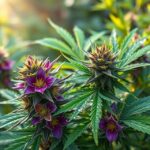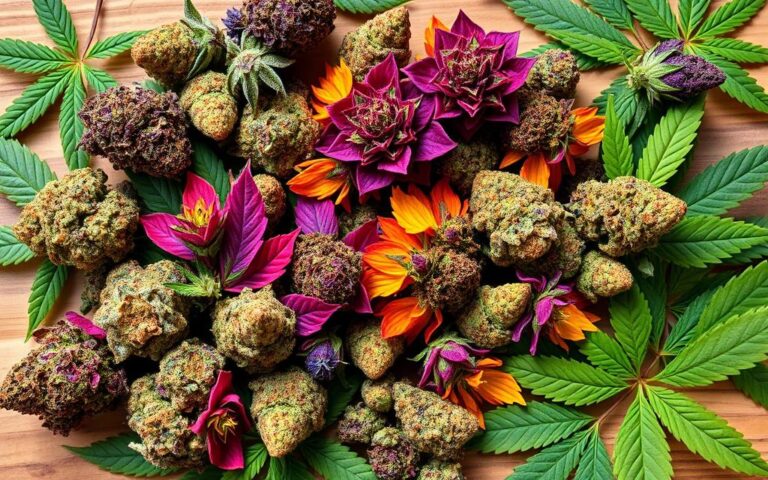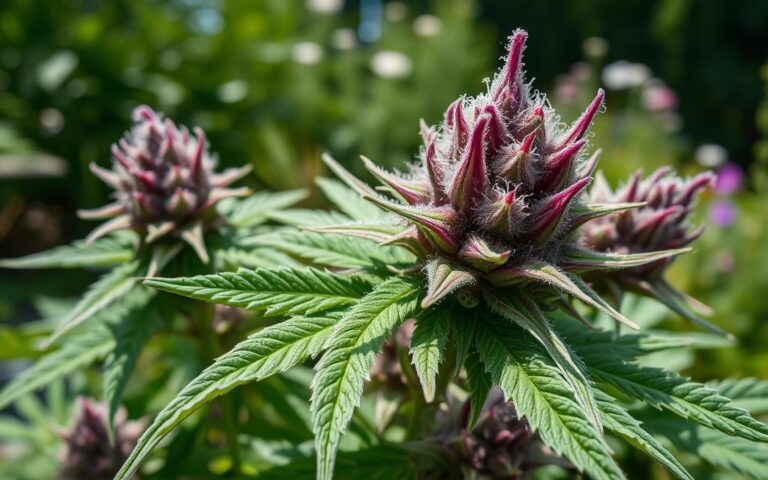Hemp Biomass vs CBD Flower: Key Differences
The world of hemp biomass and CBD flower is full of important differences worth looking into. They come from the same cannabis plant, Cannabis Sativa L., but have unique roles and features. CBD flower is famous for its high cannabinoid content and is favored by those wanting to benefit from cannabinoids.
On the other hand, hemp biomass includes all other plant parts left after the flowers are picked. It’s mainly used in industry. Knowing these differences is key for anyone involved in the hemp market.
For more details on the distinctions between CBD flower and hemp biomass, this piece will shed light on their qualities, uses, and values in the market.
Understanding CBD Flower
CBD flower comes from female hemp plants and provides many benefits. It is important to understand its definition, how you can use it, and how to tell if it’s good quality and potent.
Definition and Composition
CBD flowers are more than just pretty. They are rich in cannabidiol, with CBD levels above 14%, and sometimes up to 22%. Their composition includes a mix of cannabinoids and terpenes. This mix gives a full-spectrum effect, offering therapeutic benefits. People seek out CBD flower for its purity and effectiveness.
Consumption Methods
There are varied ways to enjoy CBD. Each person can find a method that suits them best. Common ways to use it include:
- Smoking: This method allows for quick effects.
- Vaping: Like smoking, it’s fast but considered a healthier choice.
- Edibles: Things like gummies provide longer-lasting effects as the body slowly processes the CBD.
These options suit different preferences and lifestyles. Choose what works for you.
Quality and Potency
Good CBD flower quality means looking at the CBD level and other cannabinoids. High-quality flowers have more CBD than biomass, which can have between 8% to 14% CBD. How the flower is harvested and cured matters. Also, where and how it grows can affect its quality and how it might affect you.
| Aspect | CBD Flower | CBD Biomass |
|---|---|---|
| CBD Content | 14% – 22% | 8% – 14% |
| Terpene Profile | High | Limited |
| Cost | Higher | Lower |
| Best Extraction Method | CO2-based | Solventless |
Exploring Hemp Biomass
Hemp biomass is more than just a by-product of growing hemp. It’s made of different parts and used in many ways. This shows how useful and varied this organic material is. Knowing about hemp biomass helps us see why it’s valuable in several fields.
Definition and Components
Hemp biomass comes from the parts of the hemp plant left after the flowers are picked. It includes stalks, leaves, and roots with little cannabinoid content. Hemp has cellulose and fibres, giving it special qualities. It’s both useful and green. The U.S. made about 200 million pounds of hemp biomass between 2019 and 2021, showing its resource potential.
Uses of Hemp Biomass
Hemp biomass has many important uses. It is key in various industries, such as:
- Textile and eco-friendly clothing production
- Biodegradable plastic creation
- Paper and hempcrete building materials manufacturing
- Biofuel production for cleaner energy
- Feeding animals in places like Kentucky
These roles highlight hemp’s role as a sustainable, waste-reducing resource. Hemp wood, made from hemp fibres, is super strong—stronger than oak. This points to its big potential in building and making things.
Processing for Extraction
Processing hemp biomass pulls out important compounds, especially cannabinoids. Cold ethanol and supercritical CO2 extraction are common methods. They effectively get CBD and other cannabinoids from the plant. With hemp biomass containing 5-10% CBD, these methods are key. They help make high-quality extracts used in many products, like tinctures and creams.

The Difference Between Hemp Biomass and CBD Flower
Hemp biomass and CBD flower are not the same. Their main differences lie in quality and what’s in them. Knowing these differences helps us understand how they’re used and processed.
Quality and Cannabinoid Content
CBD flower is known for its high cannabinoid content. It has about 14% to 22% CBD. In contrast, hemp biomass has about 8% to 14% CBD. CBD flower comes from the top flowers. Hemp biomass comes from the whole plant, including stalks and leaves. These parts affect their uses and the results they give.
Harvesting and Processing Techniques
How CBD flower and hemp biomass are gathered is quite different. CBD flower is carefully picked by hand. This is to keep its quality high during CBD flower processing. The steps that follow, like drying and curing, are key. They keep the flower’s strength and smell. Hemp biomass, on the other hand, is collected using machines. This is faster but doesn’t focus on keeping the plant looking nice. This method is good for making things like clothes and food. Even though the end product is useful, it’s not as fine as CBD flower. This affects how much it’s wanted in the market.
Market Value and Pricing
The market for hemp biomass and CBD flower is complex. Understanding their differences helps shape buying habits and industry trends. Knowing this is vital for those navigating this evolving industry.
Cost Comparison
CBD flower and hemp biomass have different values. CBD flower, rich in cannabinoids and terpenes, is priced higher. Hemp biomass, with fewer cannabinoids and terpenes, is cheaper. For instance, smokable CBD hemp flower costs about 20 times more than hemp biomass for extraction, if it has 10% CBD.
| Product Type | Average Price (per pound) | Cannabinoid Concentration |
|---|---|---|
| CBD Flower | £100-£300 | High |
| Hemp Biomass | £5-£15 | Low |
Hemp biomass suits large-scale production, yet premium products like full-spectrum CBD oil come from high-grade CBD flower. This shows how much consumers value quality and effects.
Consumer Preferences
What consumers want affects the market. Many prefer CBD flower for its strength. But, hemp biomass is a favorite for manufacturers because it’s cheaper and versatile. This is great for making lots of products.
As the hemp market grows, prices should become more stable. This will help consumers make better choices. Knowing these trends is key for businesses aiming to meet market and consumer demands.
Conclusion
This article has highlighted the key differences between hemp biomass and CBD flower. It’s vital for both buyers and makers to know these differences. CBD flower is treasured for its high CBD levels and steady strength. It’s perfect for direct uses and making strong oils with less plant stuff.
Hemp biomass, on the other hand, is good for many uses but has less CBD and more contaminants. This overview of hemp biomass and CBD shows that hemp biomass is for high-quality extracts, but CBD has its role too. It fits into many parts of the hemp industry’s wider uses.
As buyers become pickier, choosing the right product means knowing more about each type. This info helps you value hemp more and make choices that suit your needs and likes.
FAQ
What is the primary difference between hemp biomass and CBD flower?
The main difference is their use and cannabinoid levels. CBD flower, also known as hemp flower, has high CBD levels, from 14% to 22%. Hemp biomass includes parts like stalks and leaves, used more for industry, with lower CBD levels, from 8% to 14%.
How is CBD flower consumed?
You can enjoy CBD flower in several ways, including smoking, vaping, or adding it to food like cookies. Smoking or vaping lets you feel effects quickly. Eating it in foods gives a longer effect.
What are the benefits of using CBD flower?
CBD flower is loved for its healing powers. It has lots of cannabinoids and full-spectrum properties, including terpenes. People use it for help with anxiety, pain, and swelling.
What industries utilise hemp biomass?
Hemp biomass is big in industries like textiles, paper, building, and making biofuels. Its cellulose is great for eco-friendly goods and green energy.
How is hemp biomass processed for cannabinoid extraction?
For extracting cannabinoids, hemp biomass is put through methods like cold ethanol and CO2 extraction. These pull out CBD and other cannabinoids for use in products.
Why is the market value of CBD flower higher than that of hemp biomass?
CBD flower costs more because of its high quality and high CBD. A lot of work goes into growing and processing it. Hemp biomass is cheaper, used more for mass production.
How do consumer preferences differ for CBD flower and hemp biomass?
People choose based on their needs; CBD flower is picked for health benefits, while hemp biomass is popular for being cost-effective in production.















